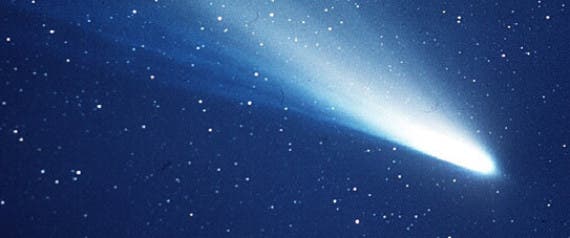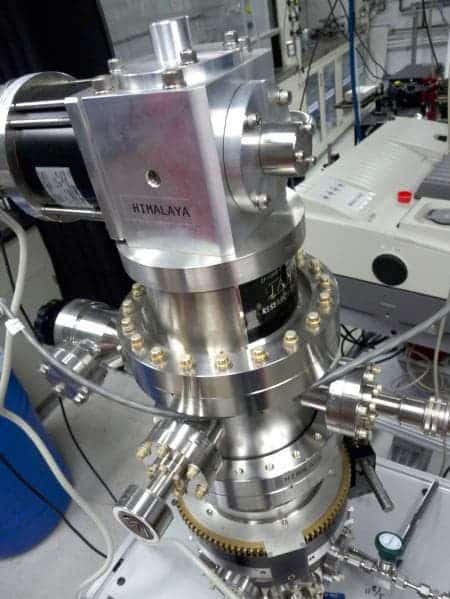Just like a deep fried scoop of ice cream, comets, such as the much heralded Comet 67P/Churyumov-Gerasimenko which saw a spaceship land on it last year, are thought to be frozen on the inside, wheres the surface is hard and crystallized. The team of scientists at NASA’s Jet Propulsion Laboratory (JPL) and the California Institute of Technology (Caltech) believe the findings further expand our knowledge on comets. Some suggest that life on Earth first emerged thanks to key organic molecules and compounds brought forth by comets colliding with our planet. The more we know, the better we can assess these sort of ideas and, if found viable, how often such events might happen in the Universe.
Deep frying a comet

Crafty engineers designed an icebox-like monitoring station called Himalaya where water vapour mixed mixed with other molecules comets are known to contain, including polycyclic aromatic hydrocarbons, or PAHs, were flash frozen to 30 Kelvin (-243 degrees Celsius, or -405 degrees Fahrenheit). The mixture sublimated into a new form of ice which doesn’t occur naturally anywhere else on the planet. It’s an amorphous ice where the vapors are frozen and trapped in place, leaving many pockets of space. The researchers believe it’s very much akin to cotton candy or aerogel.

Credit: NASA/JPL-Caltech
Next, Himalaya heated the eccentric ice to simulate conditions similar to when a comet is approaching the sun. The mixture was heated to 150 Kelvin (-123 degrees Celsius, or -190 degrees Fahrenheit), causing the outer surface to crystallize. This was expected, but surprisingly the PAHs stuck together and were expelled from the ice host, according to Caltech’s Antti Lignell who headed the research.
“This may be the first observation of molecules clustering together due to a phase transition of ice, and this certainly has many important consequences for the chemistry and physics of ice,” said Lignell.
Murthy Gudipati of JPL, also involved in the study, see this sort of chemical behavior akin to how ice cream is deep fried to make a nice crusty surface, while keeping the inside cold and refreshing. The findings were reported in the Journal of Physical Chemistry.
“What we saw in the lab — a crystalline comet crust with organics on top — matches what has been suggested from observations in space,” said Gudipati. “Deep-fried ice cream is really the perfect analogy, because the interior of the comets should still be very cold and contain the more porous, amorphous ice.”
Indeed, observations support the Himalaya experiments: comets’ interiors are frozen and composed of porous ice, whereas the surface is crystallized and hard. Considering how bad comets smell, though, they’d make unlikely deserts.






